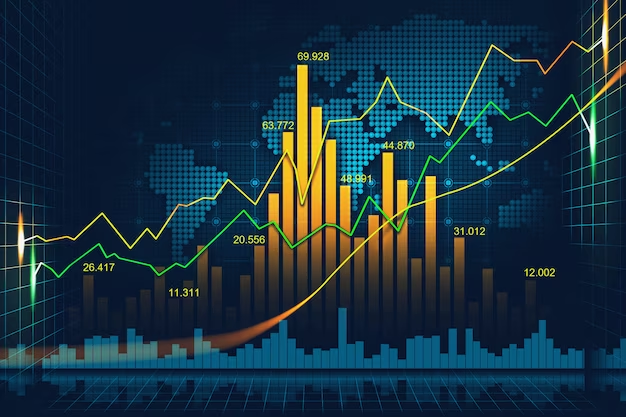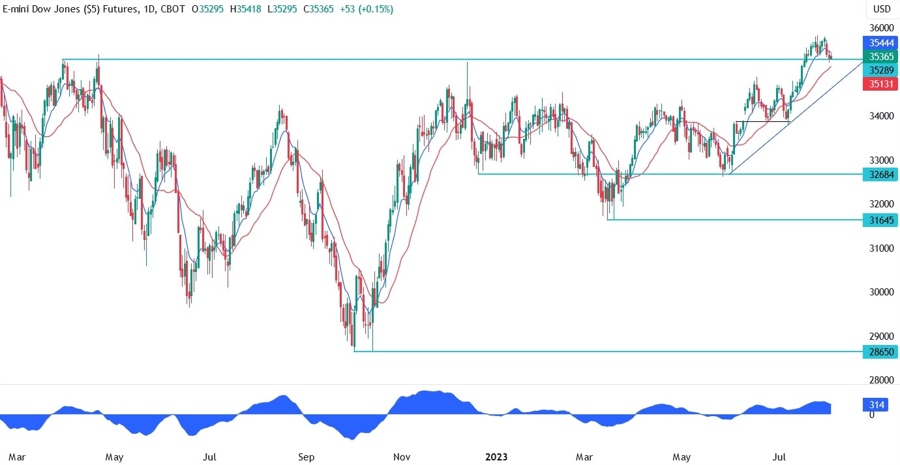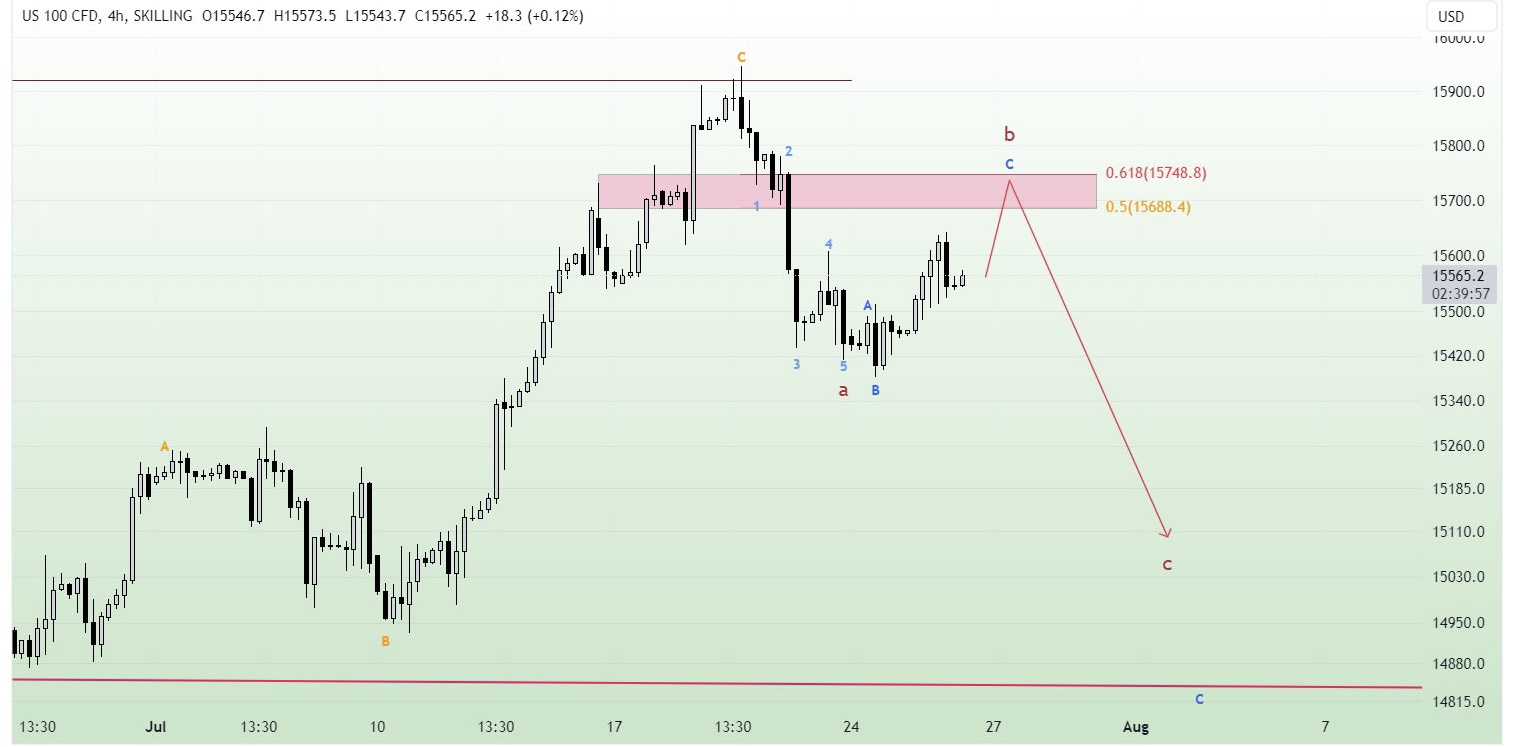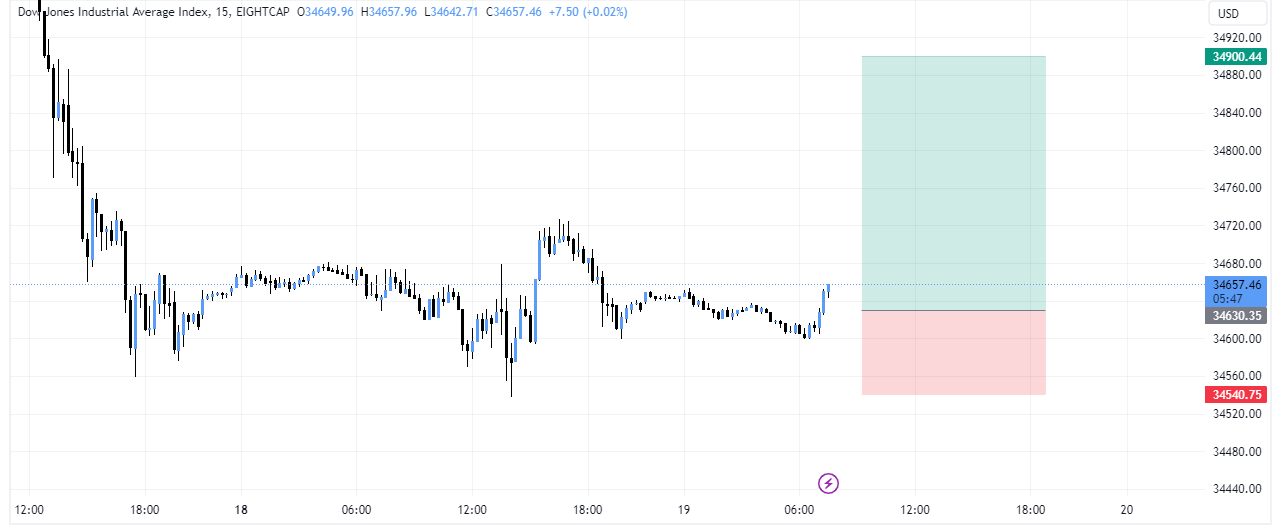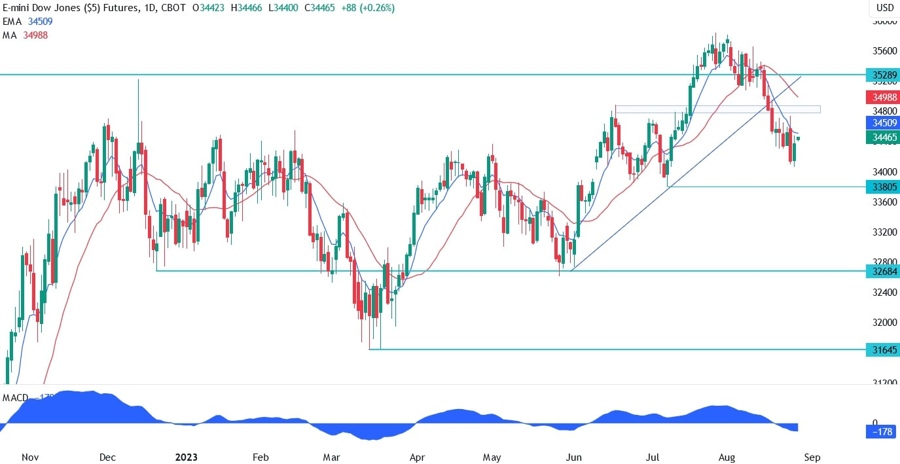EGX 30 Index Egypts Leading Stock Market Index
Parent Index
NA
Indices informations
Listed Exchanges
| The Egyptian Exchange |
Related Instuments
| EGX 70 |
Sector Represented
| Food Industries |
| Banks |
| Steel |
| Telecom |
| Real Estate |
Indices
- BSE SENSEX
- CAC 40
- CBOE NASDAQ-100 Volatility Index (VXN)
- CBOE Volatility Index (VIX)
- China50-FTSE China A50 Index
- DAX
- DAX PERFORMANCE-INDEX-GDAXI
- DE40-Germany 40 Index DAX
- Dollar Index USDX-DXY-DX-Dixie
- Dow Jones Industrial Average-DJIA
- EURO STOXX 50 SX5E
- FTSE 100 Index-UK100 Index
- Germany 30
- Hang Seng Index
- IBEX 35-Spain 35
- NASDAQ Composite
- NASDAQ-100
- Nikkei 225
- Russell 2000 Index
- S&P/ASX 200
- Singapore Blue Chip Index-STI
- Swiss Market Index (SMI) Switzerland Blue Chip Index
- TecDax Price Index
- TECHDE30-Germany Tech 30 Index
- US Tech 100 Index UT100
- US2000-US Small Cap 2000 Index
- US30-US Wall Street 30 Index
- US30M- US Wall Street 30 Index M
- US500-S&P 500 (GSPC, INX, SPX)
- US500-US SPX 500 Index
- US500M-S&P 500 Mini
- All Ordinaries
- Amsterdam Exchange Index AEX index
- ATX-Austrian Traded Index (ATX)
- BEL 20
- BELEX15
- BIRS
- BIST-Borsa Istanbul
- CROBEX
- EGX 30 Index Egypts Leading Stock Market Index
- FTSE All-Share Index
- FTSE Bursa Malaysia Index-KLCI Index
- FTSE MIB-FTSE MIB 40
- Índice Bursátil Caracas (IBC)
- Índice Bursátil de Capitalización-The General Index
- Indice de Precios y Cotizaciones
- KOSPI
- KSE 100 Index
- MDAX
- MERVAL
- MICEX-The MOEX Russia Index
- OBX Index
- OMX Copenhagen 20 (OMXC20)
- OMX Helsinki 25 (OMXH25)
- OMX Stockholm 30 (OMXS30)
- PSE Index (PSEi)
- PSI20-PSI-20
- S&P/NZX 50 Index
- S&P/TSX 60
- S&P/TSX Composite Index
- S&P/TSX Venture Composite Index
- SOFIX
- SSE Composite Index (上证综指) Shanghai Composite Index
- Straits Times Index (STI)
- SZSE Component Index (深证成指)
- TA-125 Tel Aviv 125 Index
- Taiwan Capitalization Weighted Stock Index (TAIEX)
- The Indice de Precio Selectivo de Acciones- IPC
- CBOE NASDAQ-100 BuyWrite Index (BXN)
- Hang Seng China H-Financials Index
- IBOVESPA-The Bovespa Index-Brazil Stock Exchange Index
- NASDAQ Financial-100
- SDAX – Small cap
- TecDAX
- aaa
- Amex Gold BUGS Index
- Amex Oil Index
- AScX index – Small cap
- ASE Weighted Index
- Athex 20
- Barrons 400 Index
- BELEXline
- BET-10
- BSE DCI
- BSE FCI
- BUMIX – Mid cap
- BUX – Large cap
- CA60-Canada 60 Index
- CAC All Share
- CAC All-Tradable
- CAC Large 60
- CAC Mid & Small
- CAC Mid 60
- CAC Next 20
- CAC Small
- Capital Markets Index
- CASPI
- CBOE DJIA BuyWrite Index (BXD)
- CBOE S&P 500 BuyWrite Index (BXM)
- CBV Index
- CBV Real Estate Index
- CECEEUR
- Central European Blue Chip Index – Regional large cap
- ChinaH-Hong Kong China H-shares Index
- COLCAP
- Colombo Stock Exchange Sector indices (CSE Sectors)
- CROBIS
- CSC X
- CSE 30
- CSE50
- CSI
- CSI 100 Index (中证100指数)
- CSI 300 Index (沪深300指数)
- Dow Jones Global Titans 50
- Dow Jones Transportation Average
- Dow Jones Utility Average
- DSE
- DSEX
- DSM200
- EGX 100 Index
- EGX 50 Index
- EGX 70 Index
- ERS10
- FIRS
- FT 30 Index
- FTSE 350 Index
- FTSE AIM All-Share Index
- FTSE AIM UK 50 Index
- FTSE All-World index series
- FTSE Fledgling Index
- FTSE Italia Mid Cap
- FTSE MID 250 Index
- FTSE SmallCap Index
- FTSE techMark Index
- FTSE/Athex Large Cap
- FTSE/JSE All Share Index
- FTSE/JSE Top 40 Index
- FTSEurofirst 300 Index
- FTSEurofirst Euro Supersector Indices
- GSE All-Share Index
- Hang Seng China Enterprises Index
- Hang Seng China-Affiliated Corporations Index
- HK50
- IDX Composite
- IGBC
- IPSA
- ISEQ 20-The Ireland Overall Stock Exchange Index-ISEQ20
- IT40-Italy 40 Index
- Jakarta Islamic Index (JII)
- Jamaica Stock Exchange (JSE)
- KASE
- KMI 30 Index
- KOSDAQ
- KSE All Share Index
- KSE-30 Index
- Kuala Lumpur Composite Index
- LASI
- LQ-45
- LuxX Index – Luxembourg Stock Exchange
- MADEX index
- Madrid Stock Exchange General Index
- MASI index
- MESDAQ
- MIDDE50-Germany Mid 50 Index
- MIDDE60-Germany Mid 60 Index
- Milanka Price Index (MPI)
- MSCI EAFE
- MSCI GCC
- MSCI Hong Kong Index
- MSCI World
- MSM-30
- NEPSE Index – Nepal Stock Exchange
- NETH25
- NIFTY 100 LOW VOLATILITY 30
- NIFTY 200
- NIFTY ALPHA 50
- NIFTY BANK
- NIFTY CPSE
- NIFTY ENERGY
- NIFTY FINANCE
- NIFTY FMCG
- NIFTY INDIA CONSUMPTION
- NIFTY INFRA
- NIFTY IT
- NIFTY MEDIA
- NIFTY METAL
- NIFTY MIDCAP 100
- NIFTY MIDCAP 50
- NIFTY MIDCAP LIQUID 15
- NIFTY MIDSMALLCAP 400
- NIFTY MNC
- NIFTY Next 50
- NIFTY PHARMA
- NIFTY PSE
- NIFTY PSU BANK
- NIFTY PVT BANK
- NIFTY REALTY
- NIFTY SERV SECTOR
- NIFTY SMALLCAP 100
- NIFTY SMALLCAP 250
- NIFTY SMALLCAP 50
- NIFTY100 EQUAL WEIGHT
- NIFTY100 LIQUID 15
- NIFTY200 QUALITY 30
- NIFTY50 EQUAL WEIGHT
- Nor25-Norway 25 Index
- NSE 30 Index
- NSE All Share Index
- NSE NIFTY 50
- NYSC Arca Major Market Index
- NYSE American Composite Index
- OMX Iceland 15 (discontinued)
- OMX Iceland 6
- OMX Stockholm PI (OMXSPI)
- OMX Vilnius (OMXV)
- OTCM QX ADR 30 Index
- Palisades Water Index (ZWI)
- PFTS index
- Philadelphia Gold and Silver Index
- PHLX Semiconductor Sector
- PSE All Shares Index
- PSE Financials Index
- PSE Mining and Oil Index
- PSI/GERAL
- PX Index
- RTS Index (RTSI)
- Russell 1000
- Russell 2500
- Russell 3000
- Russell MidCap
- Russell Small Cap Completeness
- S&P 100
- S&P 1500
- S&P Asia 50
- S&P BSE 500
- S&P Europe 350
- S&P Global 100
- S&P Global 1200
- S&P Latin America 40
- S&P MidCap 400
- S&P MidCap 400/BARRA Growth
- S&P MidCap 400/BARRA Value
- S&P SmallCap 600
- S&P SmallCap 600/BARRA Growth
- S&P SmallCap 600/BARRA Value
- S&P Vietnam 10 Index
- S&P/ASX 20
- S&P/ASX 300
- S&P/ASX 50
- SA40-South Africa 40 Index
- SBF 120
- SE30-Sweden 30 Index
- SET Index
- SET100 Index
- SET50 Index
- Slovak Share Index
- SMI Expanded
- SMI MID
- SPBLPGPT
- SSE 180 Index (上证180指数)
- SSE 50 Index (上证50指数)
- STOXX Europe 600
- SWI20-Switzerland 20 Index
- Swiss Leader Index (SLI)
- Swiss Performance Index (SPI)
- SZSE 100 Index (深证100指数)
- SZSE 200 Index (深证200指数)
- SZSE 300 Index (深证300指数)
- TA-35 Index
- TA-90
- Tadawul
- TEDPIX
- TEPIX
- The Global Dow
- The GSE Composite Index.
- THETAUSD Theta Network Token vs US Dollar
- TOPIX
- Trinidad and Tobago Stock Exchange (TTSE)
- UBS 100 Index
- Value Line Composite Index
- VN Index
- WIG-Warszawski Indeks Giełdowy
- WIG30
- Wilshire 4500
- Wilshire 5000
- Zimbabwe Industrial Index
- Zimbabwe Mining Index
EGX 30: Egypt’s Leading Stock Market Index
The EGX 30, also known as the Egyptian Exchange 30 Index, is the main stock market index in Egypt. It represents the performance of the top 30 companies listed on the Egyptian Exchange (EGX), which is the country’s principal stock exchange. The EGX 30 is a crucial benchmark for investors and analysts to evaluate the overall performance of the Egyptian stock market.
Components of the EGX 30
The EGX 30 consists of a diverse range of companies from various sectors such as banking, telecommunications, chemicals, construction, and more. Some prominent companies included in the index are:
- Commercial International Bank (CIB)
- Telecom Egypt
- Orascom Construction Industries (OCI)
- Egyptian Kuwaiti Holding
- Egyptian Financial Group – Hermes Holding (EFG Hermes)
These companies are carefully selected based on their market capitalization and trading volume, ensuring that the EGX 30 provides an accurate representation of the Egyptian stock market’s performance.
Importance of the EGX 30
The EGX 30 is widely followed by local and international investors, fund managers, and financial institutions. Its performance serves as a barometer for the overall health of the Egyptian economy and reflects investor sentiment towards the country’s business environment. Additionally, it provides valuable insights into the profitability and growth potential of key sectors within Egypt.
Investors use the EGX 30 to make informed decisions regarding their investment portfolios. By analyzing the performance of the top 30 companies, investors can gain an understanding of market trends and sector-specific movements that may impact their investment strategies.
EGX 30 and Economic Development
The EGX 30 plays a vital role in promoting economic growth and development in Egypt. A thriving stock market helps attract domestic and foreign investments, encouraging capital formation and job creation. It provides companies with opportunities to raise funds for expansion and innovation, thus contributing to the overall development of the business ecosystem.
Moreover, the EGX 30 acts as a channel for wealth creation and distribution, as successful companies generate returns for their shareholders, including individual investors, pension funds, and institutional investors.
Final Thoughts
The EGX 30 is a significant indicator of Egypt’s stock market performance and plays a crucial role in driving economic development. As one of the leading emerging markets in the Middle East and North Africa region, Egypt attracts attention from global investors seeking growth opportunities.
Investors interested in Egyptian businesses and the broader economy closely monitor the EGX 30 to make informed decisions about their investment strategies. By tracking the index’s performance and analyzing the underlying components, investors can navigate the Egyptian stock market with confidence.
EGX 30 Key Data Points
The EGX 30 is a widely followed stock index in Egypt, consisting of the top 30 companies listed on the Egyptian Exchange. As investors and traders closely monitor this index, it is essential to be aware of its key data points that help in understanding the overall state of the Egyptian stock market.
1. Index Value:
The most important data point for the EGX 30 is its index value, which reflects the aggregate performance of the 30 constituent stocks. This value is calculated using a market capitalization-weighted methodology.
2. Constituent Stocks:
A list of the 30 companies included in the EGX 30 is crucial information for anyone interested in tracking the index. These companies come from various sectors like banking, telecommunications, real estate, and more.
3. Market Capitalization:
Market capitalization refers to the total value of a company’s outstanding shares. Understanding the market cap of each constituent stock provides insights into the overall weightage of different companies within the index.
4. Price-to-Earnings Ratio (P/E):
The P/E ratio indicates the valuation of a company relative to its earnings. Tracking the average P/E ratio of the EGX 30 can give an idea of how investors perceive the overall market and its growth prospects.
5. Dividend Yield:
Dividend yield represents the annual dividend payment of a company as a percentage of its share price. Monitoring the dividend yield of the EGX 30 can provide insights into the income potential of the index for investors seeking dividends.
6. Trading Volume:
The trading volume of the EGX 30 reflects the number of shares traded within a specified period. It gives an indication of the market’s liquidity and investor interest in the index.
7. Market Breadth:
Market breadth measures the number of advancing and declining stocks within the EGX 30. A positive market breadth suggests overall strength, while a negative breadth indicates weakness.
8. Sector Performance:
Monitoring the performance of different sectors within the EGX 30 helps identify trends and understand which sectors are driving the index’s movement. This information assists investors in making sector-specific investment decisions.
9. Foreign Investment Flows:
Foreign investment plays a significant role in the Egyptian stock market. Keeping track of the net foreign buying or selling within the EGX 30 provides insights into international investors’ sentiment towards Egypt’s economy and its listed companies.
10. Economic Indicators:
Economic indicators such as GDP growth rate, inflation, interest rates, and unemployment rates impact the overall stock market, including the EGX 30. Understanding these factors helps in assessing the current and future prospects of the index.
11. Corporate Earnings:
Corporate earnings announcements of EGX 30 companies contribute to short-term volatility in the index. Monitoring the earnings reports and forecasts of these companies is essential for investors who focus on fundamental analysis.
12. Political Stability:
Egypt’s political stability is vital for sustaining investor confidence and attracting foreign investments. Any developments related to political stability can have an impact on the EGX 30.
13. Regulatory Changes:
Changes in regulations governing the Egyptian stock market and its participants can influence investor sentiment and trading activity within the EGX 30.
14. Market Sentiment:
Market sentiment refers to investors’ overall attitude and emotions towards the stock market. Monitoring market sentiment indicators can help gauge whether the EGX 30 is in a bullish (positive) or bearish (negative) phase.
15. Historical Performance:
Examining the historical performance of the EGX 30 provides insights into long-term trends, cyclical patterns, and potential support and resistance levels within the index.
16. Analyst Recommendations:
Keeping track of analyst recommendations, including buy, sell, or hold ratings, can offer additional insights into the expected future performance of specific stocks within the EGX 30.
17. Volatility:
Volatility measures the magnitude of price fluctuations within the EGX 30. Understanding the level of volatility can assist traders in determining risk management strategies.
18. Technical Analysis:
Technical analysis involves studying historical price and volume patterns using charts and technical indicators. Applying technical analysis techniques to the EGX 30 can help predict future price movements.
19. Exchange Rate Movements:
As Egypt’s stock market is impacted by currency exchange rates, monitoring any significant changes in exchange rates, especially the Egyptian pound, is essential for EGX 30 investors.
20. Trading Hours:
Knowing the trading hours of the EGX 30 helps investors plan their trading activities and stay updated with real-time price movements.
21. Major Market Events:
Important events such as mergers and acquisitions, initial public offerings (IPOs), and regulatory decisions can have a significant impact on the EGX 30. Staying informed about these events is essential for investors.
22. Economic Calendar:
An economic calendar provides a schedule of upcoming economic releases, including key indicators and announcements that can influence the EGX 30. Traders often align their strategies with these events.
23. Market News:
Keeping up with market news, both domestic and international, helps investors understand the broader market dynamics and identify potential catalysts or risks affecting the EGX 30.
24. Short Interest:
Short interest represents the number of shares of an EGX 30 stock that have been sold short but not yet covered. High short interest may indicate negative sentiment, while low short interest suggests positive sentiment.
25. Insider Trading:
Monitoring insider trading activities within the constituent companies of the EGX 30 can provide insights into the sentiment and expectations of company insiders.
26. Margin Trading:
Margin trading allows investors to borrow funds to leverage their positions. Understanding the level of margin trading activity within the EGX 30 helps gauge investor appetite for risk.
27. Risk Indicators:
Various risk indicators such as volatility indexes, credit default spreads, and bond yields can serve as leading indicators of potential market downturns or increased risk levels within the EGX 30.
28. Inflationary Pressures:
High inflation rates can erode investor returns and purchasing power. Monitoring inflationary pressures and their impact on the economy aids in assessing the future performance of the EGX 30.
29. Analyst Conferences:
EGX 30 companies often conduct analyst conferences to present their financial results and strategic plans. Monitoring these conferences provides valuable information for investors.
30. Market Outlook:
Frequent analysis and commentary on the EGX 30’s market outlook by research institutions, investment banks, and financial experts help shape investor expectations and decision-making.
By considering these key data points, investors and traders can make informed decisions about their investments in the EGX 30. Staying updated with the latest information is crucial for navigating Egypt’s dynamic stock market.
Fundamental Summary
- Coming soon!!

